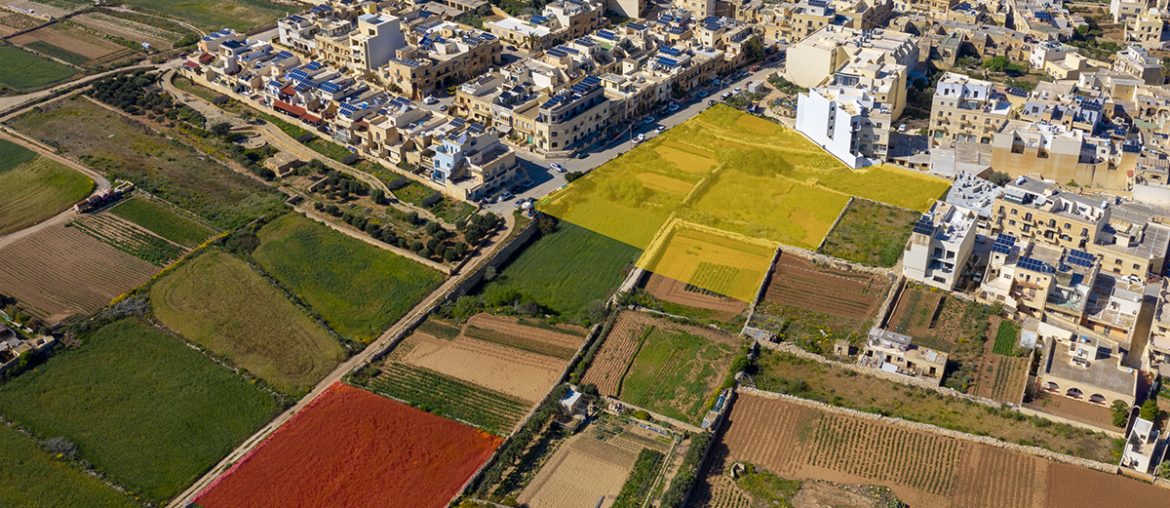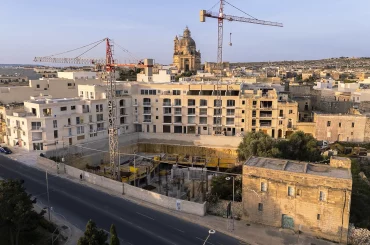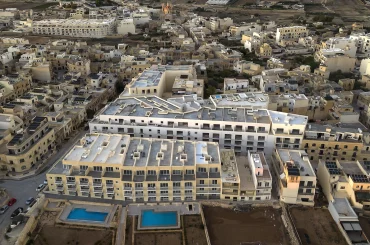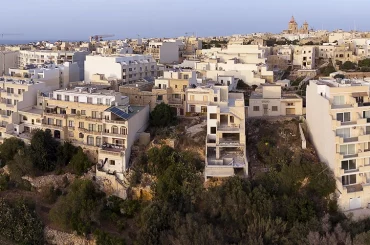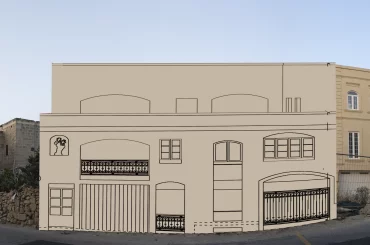The Planning Authority is set to approve construction of four stables and facilities on land outside development zone linked to a block of 73 flats that caused an uproar after being approved last week.
The stables lie on land that stretches from the three clusters of flats – altogether amounting to 124 flats, with the largest consisting of 73 flats approved last week – to the cliff near Ta Cenc.

The application was put in by Marlon Mercieca, who declared to be “an owner of the entire site.” Yet the land belongs to Excel Investments Limited according to Land Registry records. Excel is owned by Joseph Portelli (the majority shareholder), Daniel Refalo, and the Agius brothers (Ta Dirjanu).
Excel bought a strip of land running from the three blocks of flats to the cliff’s edge from Medland Developments Limited, and have since carried out various works, as revealed by this website last month. These include rebuilding the rubble walls higher and wider, embedding PVC pipes into the rebuilt rubble walls at regular intervals, extending a dirt road to the cliff’s edge over a Special Area of Conservation, and building six structures that appear to be shaping up into corbelled huts.

The Planning Authority’s case officer report recommended approval of the four stables on the basis of the Rural Policy and Design Guidance of 2014. The policy on stables specifies that these could be developed on Outside Development Zones within the curtilage of existing buildings and in reconversions of existing buildings. It also adds that other “new stables may be permitted” and then lists a set of technical criteria these would have to meet.
The criteria include size of stable per horse, distance from development zone, use of construction material and height of stables. The Sannat application satisfies the criteria.
Yet the policy, aside from the technical criteria, also has explanatory notes in which it elaborates on interpretations of the policy, particularly when it comes to stables that are not within the grounds of – or reconversions of – existing buildings. The explanatory notes deal with stables that offer horse riding: it says that although these would expectantly be situated in “pleasant and diverse landscapes”, the Planning Authority has to “ensure that the proposed activity would not cause unacceptable environmental damage through trampling or creation of new paths for riding in sensitive rural areas.”
The policy also specifies that all applications for stables “are subject to prior consultation with Environment and Resources Authority (ERA) and the Agriculture Advisory Committee.”
The latter, in its reply to the Sannat application, made an assessment on the criteria of the policy without considering the context. It said, among others, that the “applicant is registered as equine keeper”. But it did not take into consideration that this is on land belonging to developers Portelli and his partners, and the stables are part of a larger project linked to the sprawling cluster of flats, not merely stables by an independent horse-keeper. Neither did the Committee delve into what would be the purpose of the stables.
ERA on the other hand decried the proposal, saying that it “will result in the take-up of agricultural land, the proliferation of built structures and loss of rural character of the site. This is of concern from an environmental point of view, especially when noting site context, directly adjacent to a protected site.”

The “adjacent” protected area is a Special Area of Conservation as well as Natura 2000 site, intended to protect the largest colony of scopoli’s shearwaters in the Maltese Islands. The shearwaters nest in crevices in the cliff between May and September.
Birdlife International reports that they are threatened by noise and light pollution, as well as intensification of development.
The case officer also did not take into consideration the fact that the stables are part of a larger project – the flats and the land behind it – and, like the Agricultural Advisory Committee, treated the application without exploring the wider context and what would be the purpose for the stables.
Although it is not known why the developers want to have stables at this particular site, in a project linked with a large number of flats, the circumstantial evidence from previous projects of Joseph Portelli’s suggests that the stables will be part of an outdoorsy entertainment area connected to the flats. In Zebbug, for example, at a project called Hal Saghtrija, Portelli built a faux chapel, a stable with paddock area for a horse, lawned picnic and barbecue area, a sheep’s holding pen, two toilets, an agricultural store, even a walkway through the landscape lit by lights mounted on poles.
In the case of Zebbug, all the developments were carried out without a permit and then Portelli applied to sanction the developments. ERA objected and the case officer recommended refusal. But the Planning Commission still delivered permit in 2017.
At another project in Qala, the plans for the land behind flats include children’s playing area, faux windmill, and lawned picnic and barbecue area.
This suggests that the stables at Ta Sannat may be part of a larger outdoorsy entertainment area stretching to the cliff’s edge. As already pointed out, works on the land owned by Excel include embedding PVC pipes in the rubble wall, the construction of round structures, and the extension of a dirt road all the way to cliff’s edge.

It is not known whether horse riding is part of the plan. If it is, the part of the policy that says that the Planning Authority has to ensure that “trampling or creation of new paths for riding in sensitive rural areas” does not happen would come into play.
Yet there is no mention or analysis of any of this in the Planning Authority’s case officer report – no analysis on what would be the purpose of the stables here, no mention on who owns the land, or the context of the larger project, and whether any horse riding will take place and where. Instead the case officer recommended approval largely on the basis of adherence to narrow technical criteria.
No reform to rural policy despite promises two years ago
The Rural Policy and Design Guidance of 2014 has been blamed for opening the countryside to development through various loopholes that permitted a proliferation of developments beyond the development zones.
A reform of the policy got underway in 2019 and, on 1 July 2020, the reformed draft policy was launched for public consultation in a press conference by Environment Minister Aaron Farrugia and Planning Authority chairperson Martin Saliba.

Farrugia said at the time that the reformed policy has the “overarching objective of keeping development to a minimum.” And Saliba explained that the reformed policy was intended “to prioritise that [sic] rural areas are intended to sustain the farming community while providing the public with a space to get away from the daily urban life and experience the natural richness of the islands' countryside and its biodiversity and natural heritage.”
The public consultation on the reformed, draft policy, lasted several weeks. Yet twenty-months have passed since then, and the reformed policy has not been put into effect – the rural policy that remains in force is the one formulated in 2014 that everyone agrees is flawed.
In the reformed policy, rules on stables were tightened to permit only two types of stables: those that are within the grounds or curtilage of existing buildings, and new horse-riding schools sited in existing structures that would be reconverted. As such, under the reformed policy, the stables now recommended for approval at Sannat and belonging to Joseph Portelli and his partners would have been a nonstarter.

